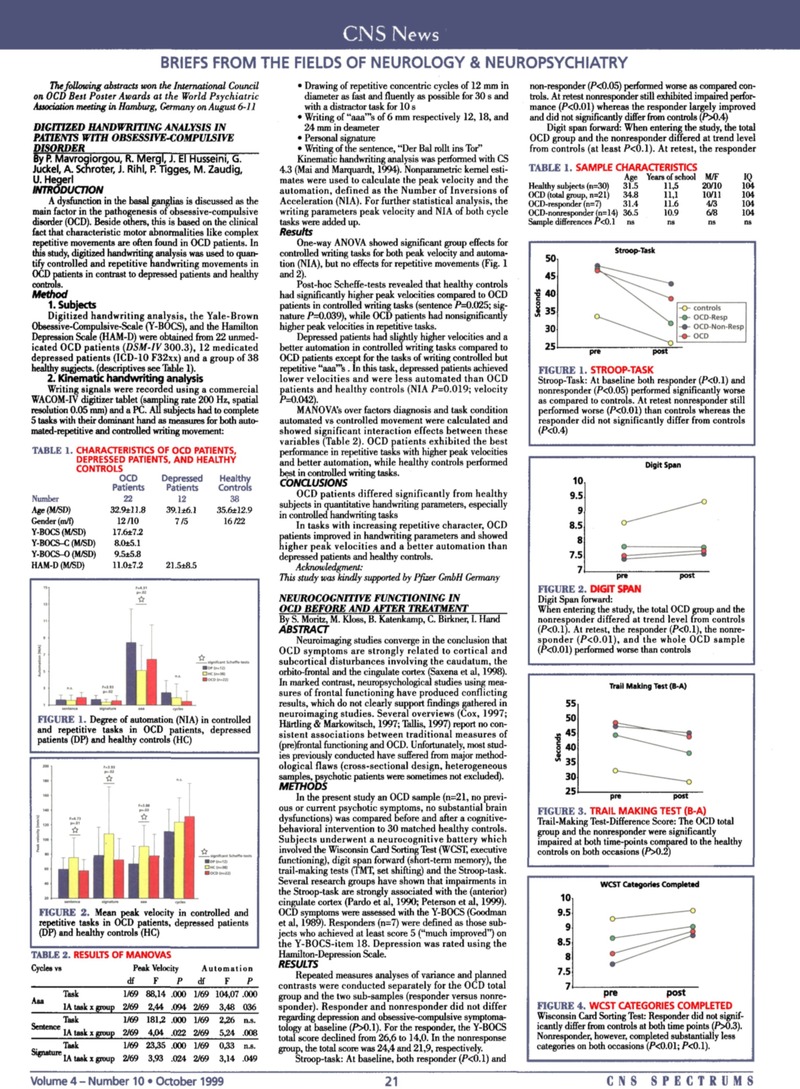No CrossRef data available.
Article contents
Briefs from the Fields of Neurology & Neuropsychiatry
Published online by Cambridge University Press: 07 November 2014
Abstract
An abstract is not available for this content so a preview has been provided. Please use the Get access link above for information on how to access this content.

- Type
- CNS News
- Information
- CNS Spectrums , Volume 4 , Issue 10: Women and the Mood Disorders Spectrum , October 1999 , pp. 21 - 22
- Copyright
- Copyright © Cambridge University Press 1999
References
REFERENCES
1.Sher, KJ, Frost, RO, Otto, R. Cognitive deficits in compulsive checkers: an exploratory study. Behav Res Ther. 1963;21:357–363.CrossRefGoogle Scholar
2.Sher, KJ, Mann, B, Frost, RO. Cognitive dysfunction in compulsive checkers: further explorations. Behav Res Ther. 1984;22:493–502.CrossRefGoogle ScholarPubMed
3.Zielinski, CV, Taylor, MA, Juzwin, KR. Neuropsychological deficits in obsessive-compulsive disorder. Neuropsychol Behav Neurol 1991;4:110–126.Google Scholar
4.Christensen, KJ, Kim, SW, Dysken, MW, Hoover, KM. Neuropsychological performance in obsessive-compulsive disorder. Biol Psychiatry. 1992;32:4–18.CrossRefGoogle Scholar
6.Schellig, D. Corsi-Block-Tapping-Test Version 4.00, Madling: Schuhfreid Ges. M. b. H., 1996.Google Scholar
7.Borsi, P. Human memory and the medial temporal region of the brain. Doctoral thesis. Department of Psychology, McGill University, Montreal. 1972.Google Scholar
8.Constans, JI, Foa, EB, Franklin, MK, Mathews, A. Memory for actual and imagined events in OC checkers. Behat Res Ther. 1995;33:665–671.CrossRefGoogle ScholarPubMed
9.Stein, DJ, Hollander, E, Cohen, L. Neirupsychiatry of Obsessive Compulsive Disorder. In Hollander, E, Zohar, J, Marazziti, D, Olivier, B. Current Insights in Obsessive Compulsive Disorder. Chichester: Wiley. 1994.Google Scholar


